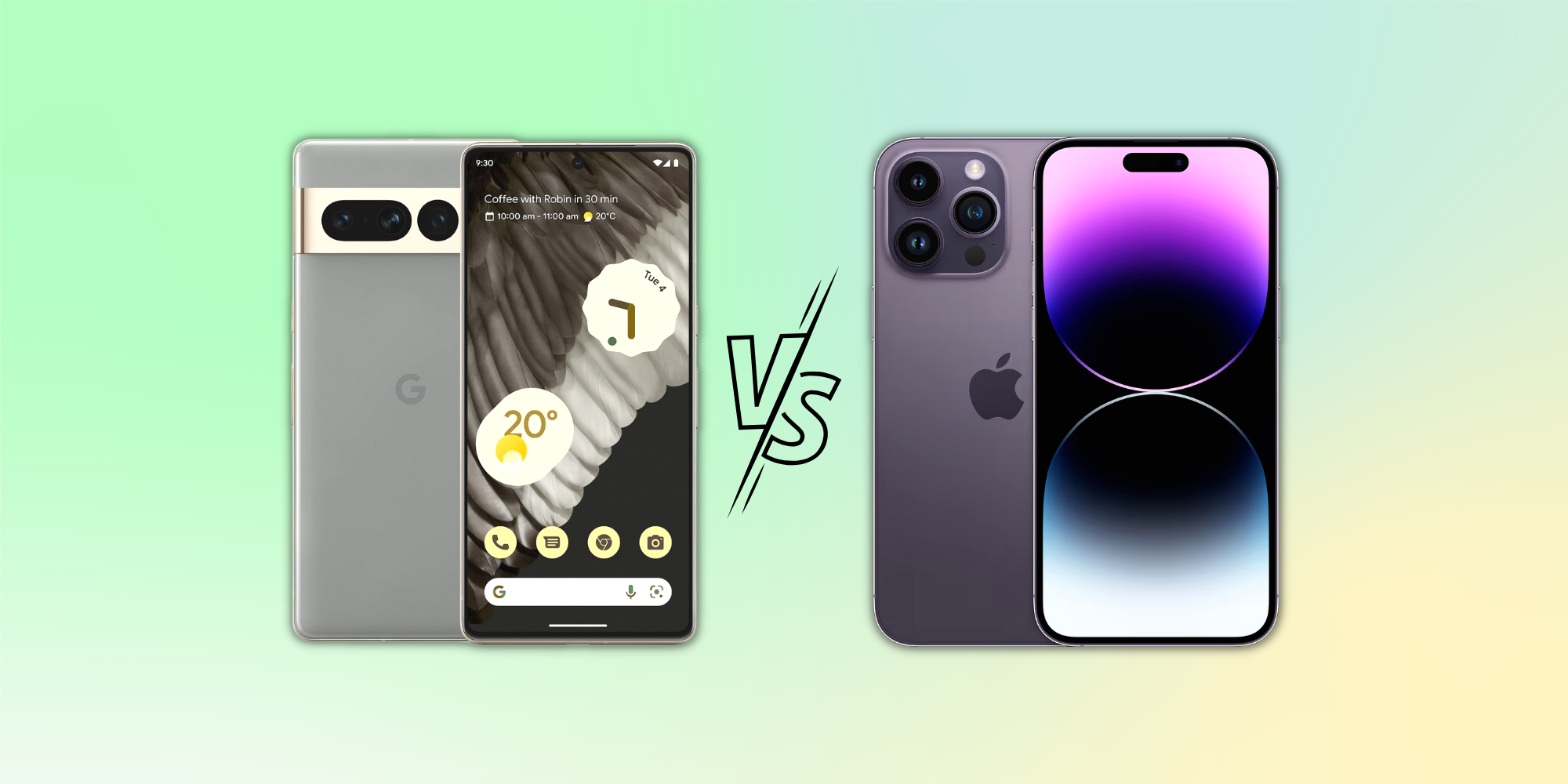The Pixel 7 Pro and the iPhone 14 Pro Max are the best smartphones that Google and Apple offer, but how do these smartphones compare with each other? A couple of years ago, Google did not take its smartphones seriously. In 2019, when Apple released the iPhone 11 with its A13 Bionic chipset, Google made the Pixel 4 with Snapdragon 855.
The following year, Apple CEO Tim Cook stepped on stage to reveal the iPhone 12, powered by a 5G enabled A14 Bionic chip. However, Google announced the Pixel 5 with Snapdragon 765G, a mid-premium chipset that does not even come close to what the iPhone offered that year. The following year, Google came up with its Tensor G1 chipset, packed with much more power and features than the Pixel 5.
The iPhone 14 Pro models flaunt a Dynamic Island, a pill-shaped notch smaller than the previous generations. On the other hand, the Pixel 7 Pro has a punch-hole cutout in the center. In comparison with the Pixel, the iPhone sure looks different. Except for the Dynamic Island and the new finishes, the iPhone 14 Pro Max seems pretty similar to the iPhone 13 Pro Max, as Apple hasn't made any significant changes to the overall design language of its Pro lineup. That's not to say that the Pixel 7 Pro doesn't look good: the symmetrical bezels and the metallic finish on the rear camera visor give the smartphone a minimal yet modern look.
Massive Screen Size, Powerful Processors And Decent Battery Life
The Pixel 7 Pro and the iPhone 14 Pro Max come with massive screens. Both smartphones have a 6.7-inch OLED panel that supports an Always-On display and adaptive refresh rates up to 120Hz. However, the difference starts to show up in the brightness and the sharpness. In contrast, the Super Retina XDR display on the iPhone 14 Pro Max can achieve a peak brightness of 1600 nits while viewing HDR content and 2000 nits outdoors, while the Pixel 7 Pro can only do 1000 nits for HDR and 1500 nits on well-lit days. But when it comes to resolution, the Pixel 7 Pro packs in 512 pixels per inch, making it sharper than the iPhone 14 Pro Max's display, which has 460 pixels per inch. Last but not least, the iPhone's display is protected by a Ceramic Shield Layer, whereas the Pixel 7 Pro features Gorilla Glass Victus on the front.
Google and Apple have equipped their latest flagships with their best chipsets ever. While the Pixel 7 Pro comes with the Tensor G2 processor, the iPhone 14 Pro Max has A16 Bionic inside. Comparing benchmark scores from Geekbench, Apple's A16 Bionic crushes the Tensor G2, which should make a difference while doing graphic-heavy gaming or video editing tasks. However, in day-to-day usage, both smartphones can handle multiple apps while being battery-efficient simultaneously; hence, users don't have to worry about performance on either of the smartphones.
Speaking of the battery, the iPhone 14 Pro Max is rated to last up to 29 hours of video playback, while the Pixel 7 Pro offers more than 24 hours of battery life. With typical usage, both smartphones should last for a day, but several battery drain tests conducted on YouTube showcase the iPhone 14 Pro Max to last a tad longer than the Pixel 7 Pro. In addition, the iPhone 14 Pro Max can charge up to 50 percent in 30 minutes with Apple's 20W power adapter, and the Pixel 7 Pro charges at a similar pace with Google's 30W power adapter.
Both The Pixel 7 Pro & iPhone 14 Pro Max Have Excellent Cameras
Regarding the cameras, both the Pixel and the iPhone feature a triple rear camera setup. The Pixel 7 Pro, for instance, has a 50MP wide camera, a 12MP ultrawide camera and a 48MP telephoto camera, and while the configuration might sound ordinary, the device can do wonders with it. This time, Google has included several camera features, such as Cinematic Blur, which applies an artificial bokeh effect on videos. Then there is the Photo Unblur feature that uses AI to sharpen old, shaky photos. Pixel 7 Pro also gets Magic Eraser and Real Tone from its predecessor.
Additionally, with the dedicated telephoto lens, Pixel 7 Pro can now click up to 5x optically zoomed images and up to 30x with the Super Res Zoom feature. For a change, the iPhone 14 Pro Max also comes with a 48MP wide camera, a 12MP ultrawide camera and a 12MP telephoto camera with up to 3x optical zoom, along with the LIDAR sensor for faster focusing. Apple is no slouch in terms of software features. The iPhone 14 Pro Max comes with Photonic Engine to ensure all the images are evenly lit, an Action Mode for super-stable videos, and the ability to shoot Cinematic Mode videos in 4K. Recording videos will be an exciting experience on both smartphones as they support 4K resolution at up to 60 fps. Still, the twist here is that the iPhone's 12MP front camera has a new trick up its sleeve, i.e., it can autofocus on users' faces, while the Pixel's 10.8MP front camera can click slightly wider selfies.
Though the Pixel 7 Pro comes with a Face Unlock, it is hardly as secure as Face ID on the iPhone 14 Pro Max. Hence, users should use the Face Unlock feature for convenience and the in-display fingerprint scanner for security. For someone who has been in the Apple ecosystem for quite some time and has multiple Apple devices, the $1099 iPhone 14 Pro Max is the way to go. However, for a Pixel 5 or a Galaxy S20 user looking to stay within the Android universe, the $899 Pixel 7 Pro is one of the best smartphones money can buy.
Source: Google, Apple, Geekbench 1, 2


.png)
.png)